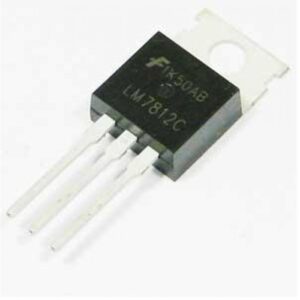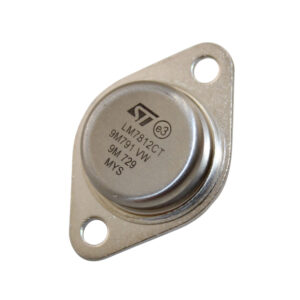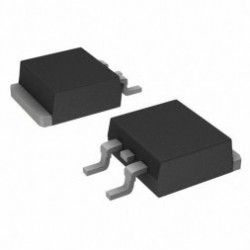An old concept.
The voltage regulator has been around since the days of the vacuum tube. Modern radios are especially dependent on them. What are they, and why do they matter? In electronics, current can and does vary but voltage usually does not, or should not. Radios generally do not like voltages that swing all over the place. How do we control the chaos of varying voltage from common off grid power sources such as solar panels, batteries, wind turbines, and so on?
Voltage regulators to the rescue!
Luckily, the voltage regulator provides a steady, stable output voltage when the source voltage varies or is different from what the load requires. Having a basic understanding of these devices and the terminology related to them is useful when operating off grid systems.
As a radio amateur, you’re already using voltage regulators: They are in your power supply. The guts of an average modern radio probably has dozens of them. A solar controller is just a glorified voltage regulator. Solid state semiconductors replaced glass tube regulators decades ago. Without the humble voltage regulator, modern radio equipment would not be possible. Voltage regulators are sometimes referred to by the generic term DC-DC converter.
There are two basic type of voltage regulators: Linear and switching. They each have pros and cons but in general linear regulators are less desirable. We’ll explain why in a moment.
The linear voltage regulator.
Linear voltage regulators work on the principle of Ohm’s Law. They take an input voltage and via resistance drop it to the desired output voltage. These types of devices are also called buck converters. The difference, or dropped power, is dissipated as heat. As you can probably guess, this is not very efficient. Some applications will waste more energy than they actually provide as an output.
On the plus side, linear voltage regulators are cheap, as in really cheap. Amazon will sell you a 15-pack of the hugely popular LM7812 for just $6.00, which makes them less than $0.50 each. Also, linears have simple design requirements. You don’t need a lot of external components or a lot of money to make effective DIY devices.
Linear voltage regulators are a good choice for low current applications (such as driving an LED or charging small batteries), when component cost is a factor, when the difference between the input and output voltage is not large, or when circuit simplicity is desired.
The switching voltage regulator.
Switching regulators work by switching the source power on and off as it flows through a capacitor-inductor network that temporarily stores electrical energy. When the device is in the “on” state, the network is charging. When it is in the “off” state, the network discharges. Therefore, the switching voltage regulator can supply constant voltage even though it is powered on only part of the time.
The switching function is performed by a transistor responding to feedback from the output. Feedback will increase or decrease the on-off cycle according to the load. The greater the the load, the faster it needs to cycle to keep recharging the capacitor-inductor. This system is much, much more efficient than the linear voltage regulator.
While linear regulators can only reduce or step down (buck) a source voltage, switchers can be configured to increase or step up voltage. These are referred to as boost regulators. There are even switching regulators that can step voltage both up or down. These are called buck-boost regulators.
There are some disadvantages to switching regulators. First, they are more expensive than linears. Depending on what you want to do, expect to pay from a few dollars up to over $20. Second, switchers are more technically complex and require more external components . Lastly, the switching sequence has the potential to create noise in your radio.
Voltage regulators in the ham shack.
As already mentioned, your power supply and solar controller are iterations of a voltage regulator. Battery chargers & maintainers are in the club too. Power management devices such as those from West Mountain Radio are also just voltage regulators with added features wrapped in a cool package. No matter how fancy, or how basic, they all do essentially the same thing.
If you are into emergency communications or preparing for SHTF, it would be a wise idea to build some simple battery chargers and solar controllers and have them at the ready. Of course, keep a stock of spare parts too. Explicit instructions on how to build these devices is beyond the scope of this article, but there are plenty of YouTubes and on line resources to guide you. Product data sheets are a wealth of information too.
Almost every type of voltage regulator is available in different packages, or formats. There is no functional difference between the various packages. It’s simply a matter of physical design requirements. The most common formats are TO-220, TO-3, and TO-263. The TO-263 format is also known as D2PAK or DDPAK. There are many other package formats; we’re just covering a few here.
Do not be intimidated. It’s really not that hard. Here is a simple DIY solar controller and a battery charger. Both use a linear regulator from the previously-discussed LM78xx family. Even the most inexperienced ham on a low budget can successfully assemble these in a weekend.
Data sheets.
Every semiconductor has a data sheet. A data sheet is a short summary of all the specifications of a given component. For example, it will list physical characteristics, maximum and minimum operating temperatures, voltage and current parameters, and much more. There is more information on a data sheet than the average ham will ever need.
Data sheets are not that critical if you are building someone else’s design and they’ve already sorted out the technical details for you. If you are gutsy (or smart) enough to create an original circuit, or modify an existing circuit, data sheets are essential.
Yes, you can do this!
DIY projects are seldom as good as commercially made devices, but they are very easy and inexpensive and will work surprisingly well. You’ll also have the benefit of knowledge. If something goes wrong, you’ll be familiar with how to troubleshoot the device because you built it. They’re excellent learning projects and SHTF backups.
What we learned today.
You should now be able to:
- Define what a voltage regulator is and what it does.
- Understand the importance of voltage regulators and the types of devices that use them.
- Understand and describe the basic characteristics of linear and switching voltage regulators.
- Recognize and identify the TO-220, TO-3, TO-263, D2PAK, and DDPAK semiconductor packages.
- Define and understand the terms buck, boost, buck-boost, and DC-DC converter in the context of a voltage regulator.
- Locate on line resources on how to build useful devices with voltage regulators.
- Know what data sheets are and their importance to circuit design & construction.



Iuse the LM78XX ( the XX = what ever output voltage you need) series of regulators all the time for quick and easy power supply projects at work. Just this last week I made a 5 Vdc output unit being fed with a 9 Vdc battery so I could use my portable signal generator around the shop with out the need for a wall wart supply it came with. Yes I could have just put a battery pack in it … maybe room is very scarce inside the unit, so the simple regulator pack I built easily attaches to the back side of the generator and now I can go anywhere I need to use the signal source and not have to have a wall wart source.
I should mention this is n my work place and not in my ham shack, though I also use these little gems all the time in my shack too. This is an excellent article with good links for those who want to jump into building these.
I’m glad you liked this article, Mike. The LM78xx linear regulator family is very well known and is useful in many applications. I encourage all off grid amateurs to familiarize themselves with this versatile semiconductor. The internet is loaded with great DIY ideas.
Good basic refresher, Chris
Thanks
4Bs/73
I’m glad you enjoyed it, Ted. Thanks for stopping by.
This is was one of your best articles yet, I would love to see more like it. Do you suggest any specific sources of DIY projects, parts, books, videos, and or sites? I know of a lot and have been dabbling in electronics for a few years now, I knew about regulators but needed a refresher and encouragement to get out and make something.
Hi Devin, I’m glad to hear you enjoyed this article. I do not have any specific suggestions for DIY ideas and resources. Usually when I want to put a project together I just google it and use someone else’s plans. YouTube is a great place for ideas too. For parts and components, there’s that old standby, Amazon. Digi-Key and Gigaparts have a lot of stuff too. I am old enough to remember going to Radio Shack when I needed a transistor or a capacitor, but those days are long gone.